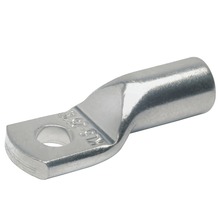So by three planes, does the lower jaw project upwards as the side ones close in?
I'm not sure what you mean about the 'side ones' but, from what we swe i the photos, I can's see how pressure could be ('directly'

applied in more than one plane.
It looks as if the tool produces 'hex' crimps simply by squashing (in one plane) the crimp into a hexaginal shape constrained by a hexagonal hole in the die ...
However, those holes are not even 'regular hexagons' (all sides equal). In those pics,they are much 'wider' than 'tall', so they would seem to be only fractionally different from ('better than') the ones we are used to seeing, with the 'sides' being rounded.
To get what I would personally call a 'true hexagonal crimp' requires a much more complicated too, which
actively applies pressure in three planes. I believe (but am far from sure) that DNOs (and other 'industrial' users) use such tools (usually hydraulic) for large cables.
Until this thread, I thought that single core should not be crimped. I am glad to be corrected, but would like to know more about which crimping tools and connectors should be used.
It is certainly the case that some industries/organisations (e.g. NASA) have a policy that single solid conductors should not be crimped. However, you only need to 'look around', or look at the archives of a forum such as this, to see that UK electricians (and very probably others) regularly use, and advocate/advise the use of, crimps on solid conductors (e.g. T+E up to 2.5mm²)..
As a confessed 'non-expert', I'm in no position to be regarded as any authority but, for what it's worth, I've personally never been very comfortably with joints (with any type of conductor) crimped using the sort of tools that electricians seem to use and advocate - but that's probably 'just me'. I would personally be much more comfortable with soldered joints any day - but, again, that's just me!
Kind Regards, John


